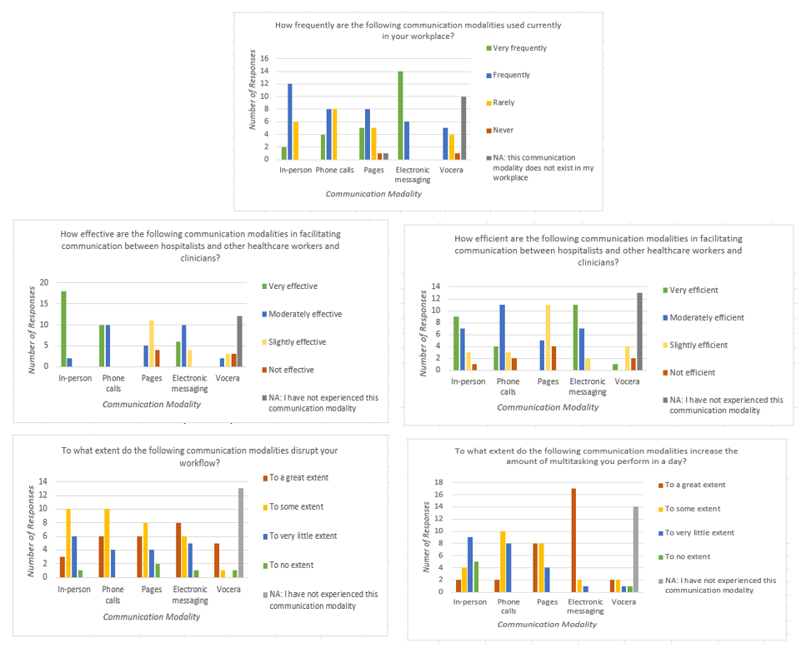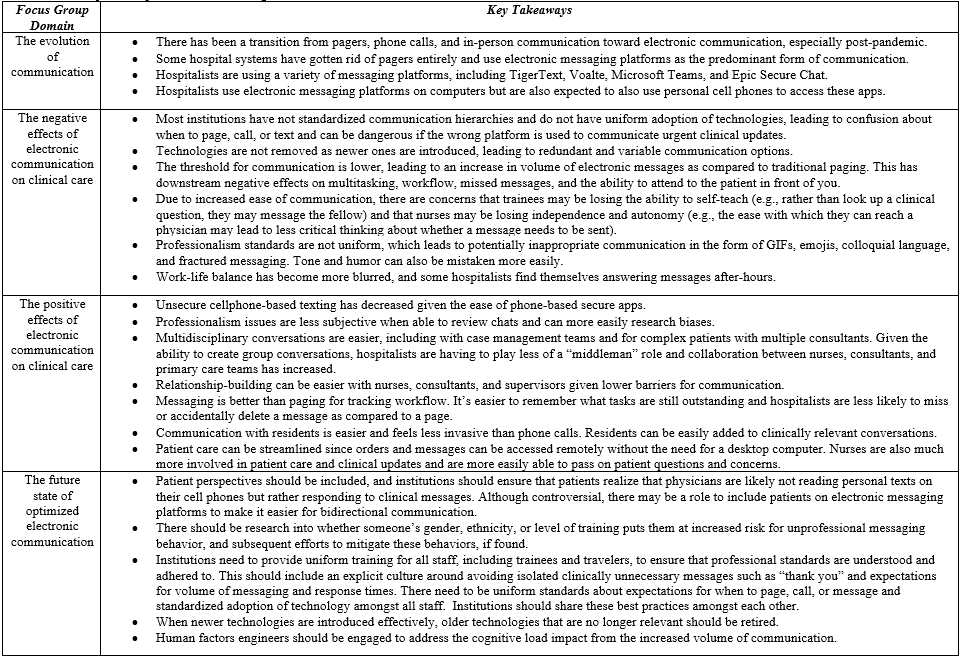Background: Effective interpersonal communication is critical in healthcare. Historically, pagers, phone calls, and in-person conversations have been the main form of in-hospital communication. New communication technologies, such as electronic messaging, are increasingly becoming the primary way for healthcare workers to communicate. In 2017, 27% of Society of Hospital Medicine responding organizations reported some use of electronic messaging; this number has likely increased as Epic’s “Secure Chat” feature was released after this survey was conducted. Implementation of electronic messaging can decrease interruptive non-urgent phone calls and enhance communication among healthcare workers, but concerns remain about increased risks of alert fatigue, inappropriate use during critical communications, miscommunication, and risk of errors due to multitasking and increased cognitive load of multiple interruptive alerts. This project utilized the multisite HOMERuN collaborative to perform a survey and focus groups to further assess hospitalist views on how communication is changing in hospitals.
Methods: This study used rapid qualitative methods, including focus groups and report-out structures, to collect and analyze data from hospitalist clinicians who participate in the HOMERuN collaborative. We performed six simultaneous 30-minute virtual focus groups during a HOMERuN collaborative meeting. A concurrent REDCap survey regarding attitudes toward communication platforms was also sent to participants. Templated summaries and matrix analyses were used to analyze the data and identify recurring concepts and patterns. Member checking was also conducted, including a report out with session summary after the focus groups.
Results: A total of 28 hospitalists and six moderators participated in six focus groups; 20 of these hospitalists also completed a REDCap survey (71% response rate). The hospitalists had, on average, 17 years of experience (range 4-31 years), were 54% clinical (range 20-100%), and practiced at academic institutions across the United States. Between electronic messaging, phones, in-person communication, pages, and Vocera, the survey indicated that electronic messaging is being used the most frequently but also increases multitasking and disrupts workflow. However, electronic messaging is perceived as being the most efficient way to communicate and is rated as moderately effective (Image 1).Focus group sessions revealed that all represented institutions had adopted electronic messaging, although the degree of integration and type of platform varied. Hospitalists felt that the transition to electronic messaging had both positive and negative clinical impacts. It was felt that electronic messaging generally decreases barriers for communication, leading to increased volume of chats but also better collaboration and clinical care. However, non-uniform implementation and adoption of these technologies, coupled with a lack of institutional guidance about usage expectations, can lead to breakdowns in professionalism, communication, and patient safety (Table 1).
Conclusions: Communication technologies are evolving at a rapid pace. Frontline hospitalist perspectives, as understood through both research and pragmatic methods, will ensure that these technologies are clinically relevant and do not have unintended consequences for healthcare workers, patients, and healthcare systems.


